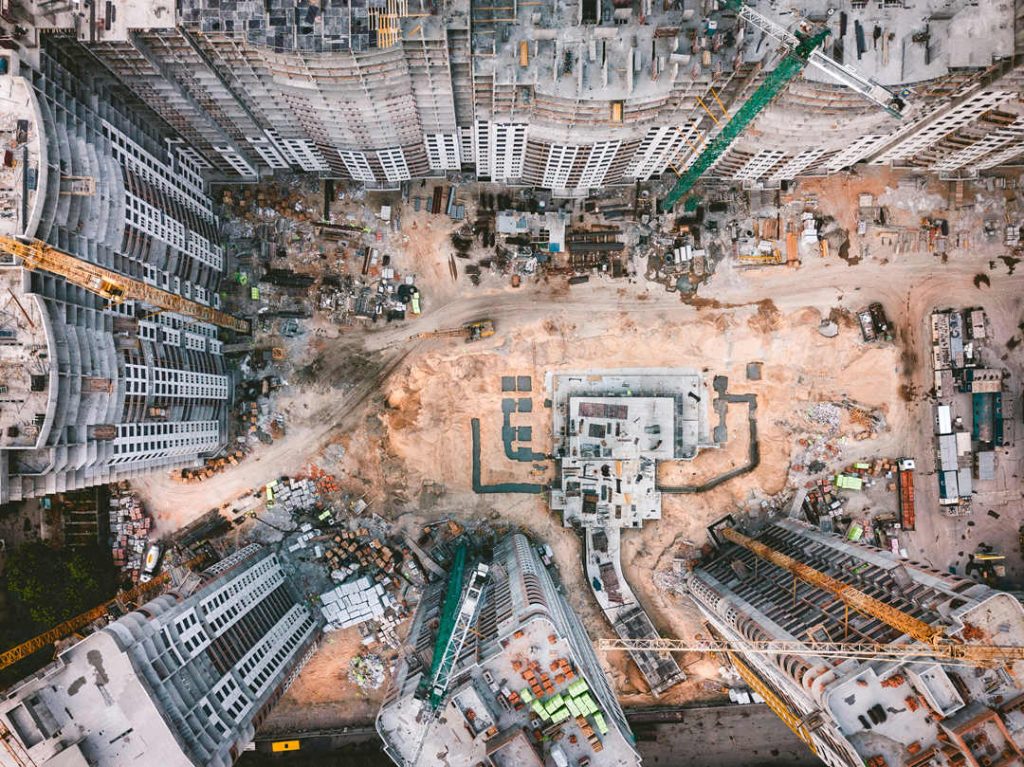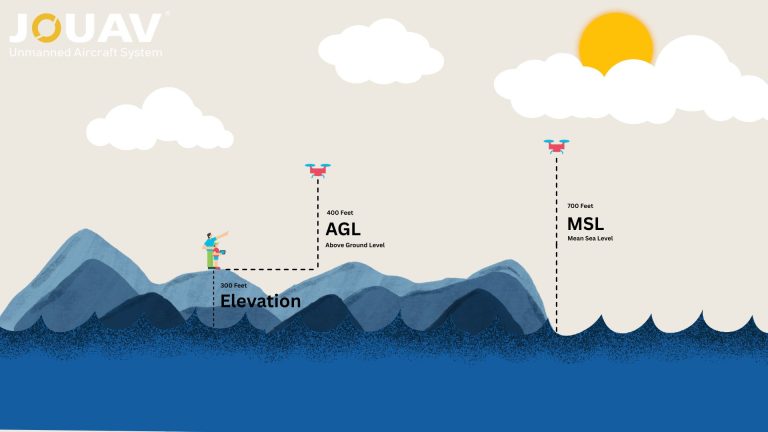Construction Site Security: A Comprehensive Guide
Millions lost, projects delayed: Construction site theft is a costly reality.
According to the National Equipment Register,a staggering $300 million to $1 billion lost annually in stolen construction equipment, with recovery rates hovering around a dismal 25%.
This financial loss is just one piece of the puzzle. Vandalism and trespassing can disrupt operations, damage property, and create safety hazards for your workers.
While conventional security guards offer some protection, their cost and limited ability to monitor large, constantly changing sites can be drawbacks.
This comprehensive guide outlines effective construction site security strategies to give you peace of mind.
We'll delve into various security measures, from physical barriers and access control to electronic monitoring and drone surveillance.
Let's get started!
What is Construction Site Security?
Construction site security refers to a comprehensive set of measures deployed to safeguard workers, equipment, materials, tools, visitors, and the surrounding community from theft, vandalism, and other potential threats. The main goal of construction site security is to ensure the safety of people, protect valuable assets, and secure information.
The Importance of Construction Site Security
The significance of robust construction site security cannot be overstated. Construction sites, by their very nature, are often located in prominent public spaces, are visible, and are in constant flux, making them prime targets for criminal activities.
They house a multitude of valuable items, from small, easily transportable tools to large, expensive machinery, and significant quantities of materials such as copper and metal, all of which are attractive to thieves.
Inadequate security measures can lead to significant financial losses due to theft or vandalism, cause delays in the completion of projects, and compromise the safety of workers and visitors.
Therefore, it is crucial for construction sites to constantly evaluate and upgrade their security measures, considering both traditional risks and current conditions.

11 Reliable Ways to Improve Construction Site Security
Securing a construction site goes beyond simply erecting a fence. An effective plan requires a comprehensive assessment that tackles both internal and external threats. Here's a breakdown of reliable construction site security solutions.
Risk Assessment
The cornerstone of any effective security plan is a deep understanding of your vulnerabilities. A comprehensive risk assessment provides the foundation for crafting a robust security strategy. This in-depth evaluation should encompass several key aspects of your construction site:
- Site Layout and Surroundings: Begin by meticulously examining the physical layout of your site. Identify areas with limited visibility, secluded corners, or easy access points that could be exploited by criminals. Additionally, consider the surrounding environment. Are there abandoned buildings or poorly lit areas nearby that could provide potential hiding spots?
- Geographical Location: The location of your site plays a significant role in determining potential threats. Construction sites in high-crime areas or those with easy access to major roadways might require more stringent security measures compared to those in secluded locations.
- Past Security Incidents: Review any past security breaches or incidents that have occurred on the site. Understanding the nature of these past events allows you to identify recurring vulnerabilities and tailor your security plan accordingly.
Secure Perimeter Fencing
The first line of defense is a robust physical barrier. Choose your fencing based on your project's needs.
For long-term projects, consider the strength and durability of chain link fencing.
Temporary fencing is a good option for constantly evolving sites, while high-security areas might necessitate the imposing presence of concrete barriers.
Regulate entry and exit with secure gates. Man these gates with security personnel or implement a keycard access system to ensure only authorized personnel can enter the site.
For your most valuable equipment, create a designated storage area within the perimeter fence. This area should be well-lit and have heavy-duty locks, either electronic or high-quality padlocks, to deter break-ins.

Access Control Systems
Modern construction site security goes beyond physical barriers. Access control systems offer a powerful solution by integrating software and hardware to manage entry and exit points.
Imagine a system that combines turnstiles at entry points with smart devices that verify worker credentials using access cards or codes.
This not only deters unauthorized entry but also ensures that only authorized personnel with the appropriate permissions are granted access to specific areas.
This can significantly enhance overall security and even help prevent accidents by restricting access to hazardous zones.
Warning Signs
Don't underestimate the power of clear communication. Post prominent warning signs at the entrance and around the perimeter of your site. These signs should be clear, concise, and written in the language understood by the local workforce.
Spell out the consequences of trespassing in no uncertain terms – fines, legal action, and the potential for prosecution. Highlight the security measures in place, including visible security cameras and alarm systems, to make potential intruders think twice.
Don't forget about safety signage. Mark hazard zones clearly, identify emergency exits, and post equipment usage instructions to prevent accidents and keep your crew safe.

Zero Tolerance Policies
Unfortunately, security breaches can also occur from within. Many theft incidents involve authorized personnel or individuals who have been granted access to the site.
To combat this, establish clear and concise anti-theft policies that outline the consequences of unauthorized activity. Distribute these policies to everyone who enters the site, including workers, subcontractors, and delivery personnel.
Taking a zero-tolerance stance against internal theft and holding violators accountable sends a strong message and discourages this type of criminal activity.
Inventory Management
Another crucial aspect of internal security is robust inventory management. A significant oversight on many construction sites is the lack of a centralized system for identifying and tracking equipment and tools.
To address this, implement a system that ensures proper identification of these valuable assets.
This could involve using unique markers placed in multiple locations on each piece of equipment or engraving owner-applied numbers for easy identification.
Maintaining an updated inventory list allows you to monitor equipment presence and ensure it remains on-site.
In the unfortunate event of theft, having comprehensive identifying information on your inventory list increases the chances of recovering stolen equipment.
Security Lighting
The majority of construction site thefts occur under the cover of darkness. Inadequate lighting creates a haven for thieves who prefer to operate in the shadows.
To combat this, ensure sufficient lighting throughout your job site. Strategically placed and well-maintained lighting fixtures eliminate dark corners and shadows, making the site less attractive to criminals.
Consider using high-mast lighting systems to illuminate larger areas effectively.
Motion-sensor lighting adds an extra layer of security by startling intruders and making their presence more noticeable.
The sudden burst of light can also serve as a deterrent, discouraging them from proceeding with their illicit activities.
Security Alarm Systems
Construction site security alarms offer various options to suit your needs. Consider audible alarms equipped with loud sirens and flashing lights to effectively scare off intruders in the act.
The sudden noise and visual alert can disrupt a crime in progress and encourage the perpetrator to flee.
For situations where discretion is key, silent alarms can discreetly dispatch authorities to the site without alerting the trespasser, allowing for a swift apprehension.
Video-verified alarms often receive the fastest response times from law enforcement. These systems capture footage of the triggered event, allowing authorities to assess the situation and determine the appropriate level of response.
This significantly increases the chances of catching criminals red-handed and recovering stolen items.
Security Guards
Security guards, also known as construction site security officers, provide a visible deterrent and can take immediate action during security breaches.
Their presence alone can discourage potential trespassers and act as a psychological barrier.
Security officers can also conduct patrols, monitor security cameras, and respond to access control breaches.
However, remember that guards have limitations in coverage, especially on large sites. It's crucial to combine them with other security measures for a truly comprehensive approach.
Video Surveillance (CCTV)
Video surveillance systems are a powerful security tool. Visible construction site security cameras discourage theft and provide valuable evidence for apprehending criminals.
Opt for high-resolution cameras with features like pan-tilt-zoom for better coverage and remote monitoring capabilities.

Consider wireless security cameras for temporary sites or areas lacking existing infrastructure.
Eco-friendly and cost-effective, solar-powered security camera systems eliminate reliance on external power sources.
Depending on the site's size, varying channels of security cameras, such as 8, 16 or 32, may be required to effectively monitor all areas.
Renting security camera systems can be a cost-effective option for temporary projects.
Drone Surveillance
Unlike fixed cameras or security personnel, drones, such as the JOUAV CW-15, give a comprehensive bird's eye view of the entire site, including hard-to-reach areas.

These devices can quickly respond to security incidents, enabling fast action to minimize damage and apprehend offenders.
In addition to their surveillance capabilities, drones contribute to improved access control and perimeter monitoring.
They can keep an eye on entry and exit points, detect unauthorized access attempts, and identify potential breaches in the perimeter fence.
Beyond security, drones also enhance worker safety by inspecting hazardous zones, and preventing accidents and injuries.
Plus, they collect valuable data that can be used to bolster overall security planning.





